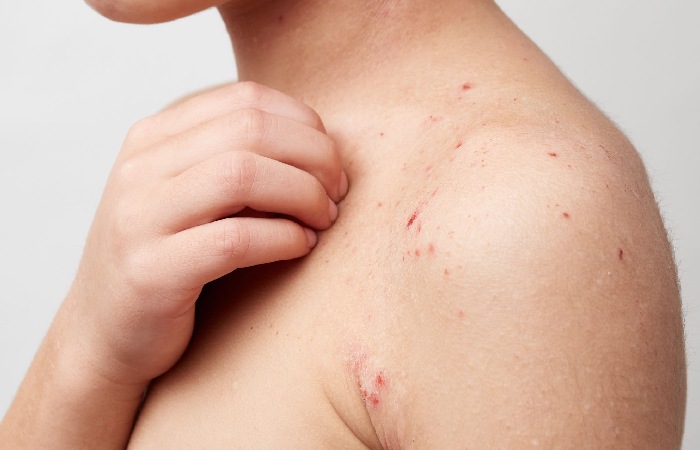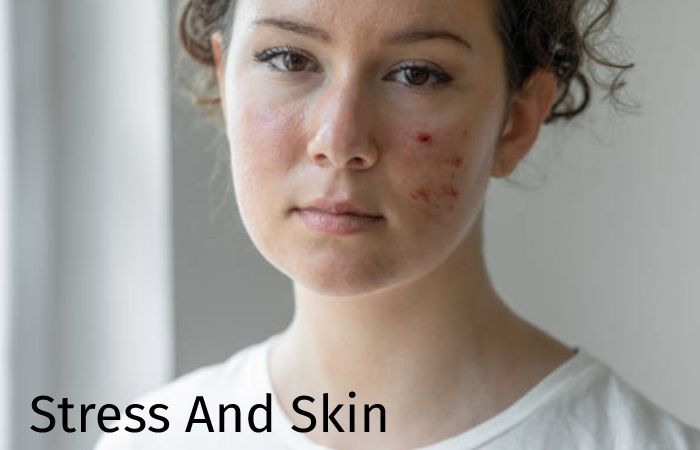Skin’s Rashes – We even express feelings through our skin. We blush when excited, break out in a sweat, worry lines or jump out of our skin in anger. Skin’s rashes caused by stress are also not uncommon. The skin is, so to speak, “the mirror of the soul” – and can withstand a lot every day.
Table of Contents
The Language Of The Skin
The connection between skin and mental well-being has now also been scientifically proven. And in both directions. It means that when we feel good, it positively affects our complexion and vice versa. If the skin itches or burns, this can indicate that our physical and mental health is out of balance, like an alarm system that means something is wrong. In this article, we give you an insight into the language of your skin. We’ll show you how to understand your skin’s signals and support it in daily tasks.
Rash From Stress
Almost all people will experience a temporary or chronic skin rash. In addition to allergies, genetic factors, or external environmental influences, psychological stresses cause a lot of trouble for our skin. For example, a skin rash can be triggered or intensified by stress, fear, or anger. Chronic skin diseases such as neurodermatitis or psoriasis (psoriasis) are genetically predisposed, but psychological factors significantly influence their course. They are, therefore, among the so-called psychosomatic skin diseases.
Psychosomatics is a specialist area of medicine and deals with the interaction between the soul (psyche) and body (soma). The focus is on illnesses where psychological and social stress is the leading cause and consequences.
What Stress Does To Our Skin?
Stress can have very different effects on our physical and mental well-being. While short-term stress can make us more alert and efficient, it weakens our immune system and our skin’s defenses in the long run. Stress hormones constrict the blood vessels, so the skin is less supplied and loses resistance. Bacteria, viruses, and fungi penetrate the skin layers more easily and irritate. In addition, stress hormones increase inflammation and thereby improve the symptoms of skin rashes.
In medicine, a rash is a series of temporary skin changes. These include red spots, blisters, or scaly patches of skin, most commonly accompanied by itching. Affected areas can also burn or hurt. Permanent changes such as moles do not count as rashes.
Stress And Skin – Cause Or Consequence?
Let’s be clear: Long-term stress weakens the skin’s defenses and can cause skin rashes. Those affected often experience this as an additional burden. For example, because of an unbearable itching. Or because they trigger fears and feelings of shame and cause those affected to withdraw. A vicious circle arises. Especially in the case of chronic skin diseases such as neurodermatitis, those often affected no longer even know what came first – the skin condition or the psychological stress.

Which Helps With Stress Rash
The question of whether stress is the cause or consequence of skin rashes is not that important. It is more important that one recognizes the connections between skin and mental well-being and reacts to the signals of the skin. So what can you do?
Don’t Get Stressed
To counteract a stress rash, get to the bottom of what is stressing you out. First, it is essential to know your stressors, i.e. the factors that trigger stress. If you are aware of your stressors, you can specifically prevent and reduce them. In addition, relaxation techniques such as meditation or autogenic training can also help to reduce your essential tension and make you more resistant to stress.
In this scientifically evaluated course program, we will teach you practical strategies and helpful tips for stress prevention and dealing with stress.
Compliment Yourself
In the case of skin rashes, the supposed “blemishes” of the skin often come into focus and appear “even bigger” as a result. That’s stressful. So direct your gaze to the things you like about your body or your positive qualities. Formulate a small message to yourself daily, which you can stick on the bathroom mirror in the morning.
Well-Being And Rest For Your Skin
You can also make your skin more resilient to stress “from the inside”. Ensure you drink enough water (about 2.5 liters a day) and eat healthily. The vitamin A contained in fruit and vegetables, for example, is essential for skin regeneration and prevents dry, scaly patches. In addition, a growth hormone is released during sleep, which also contributes to the renewal of the skin, making it more resilient and counteracting skin’s rashes caused by stress. By the way, the recommended optimal sleep duration for adults is 7-9 hours. But pay attention to your sleep needs and stick to the amount of sleep you feel comfortable.
Conclusion
It takes time for your skin to recover and become visible again. And even if most (chronic) skin diseases such as neurodermatitis cannot be cured, their course and severity can be positively influenced. So don’t put yourself under additional pressure, but concentrate on what you can change. Your skin will thank you.
also read – Hair Care 9 Tips to Keep your Hair Healthy
